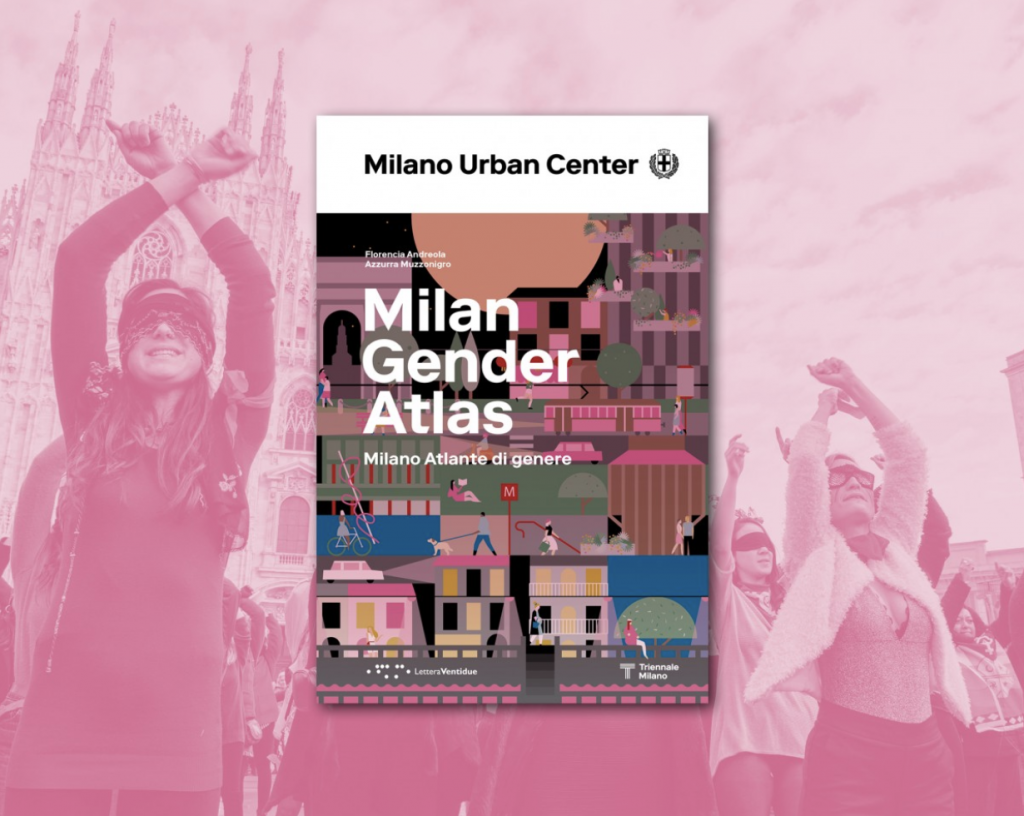
Milano Atlante di genere è sia un progetto di ricerca che una metodologia sviluppata da Sex & the City per esaminare gli spazi urbani attraverso una lente di genere. Il progetto si propone di decostruire il paesaggio urbano contemporaneo di Milano utilizzando specifici strumenti di osservazione, che mettono in luce come la città risponda – o non risponda – alle esigenze delle donne e delle minoranze di genere. Il risultato è uno strumento teorico e pratico per progettare ambienti più inclusivi e attenti ai bisogni diversificati e ai corpi che abitano lo spazio urbano.
Milano Atlante di genere è stato selezionato da EIGE (European Institute for Gender Equality) fra le 12 buone pratiche sul Gender Mainstreaming per l’European Green Deal.
Atlante di genere & Gender Atlas in quanto metodologia di indagine delle città sono un marchio registrato.
Il libro è acquistabile sul sito dell’editore LetteraVentidue, in libreria o su Amazon.
Milan Gender Atlas is both a research project and a methodology developed by Sex & the City to examine urban spaces through a gender lens. The project seeks to deconstruct Milan’s contemporary urban landscape using specific observation frameworks, which reveal how the city addresses—or fails to address—the needs of women and gender minorities. The result is a theoretical and practical tool for creating environments that are more inclusive and sensitive to the diverse needs and bodies inhabiting urban spaces.
Milan Gender Atlas is selected by EIGE (European Institute for Gender Equality) among the 12 good practices on Gender Mainstreaming for the European Green Deal.
Atlante di genere & Gender Atlas as a methodology for investigating cities are a registered trademark.
The book can be purchased on the publisher LetteraVentidue’s website in bookshops or on Amazon.
La mappatura ambisce a restituire le declinazioni che la città propone rispetto alla vita delle donne. Indagandone gli usi, intercetta i servizi che a vario titolo rispondono a esigenze legate alla loro vita quotidiana: i luoghi per l’allattamento sicuro, i servizi igienici pubblici, gli ascensori in metropolitana, le aree gioco, gli asili nido, le piazze aperte. La vita quotidiana delle donne è, infatti, condizionata dalla necessità di fare fronte alla maggior parte del lavoro di cura non retribuito. Trattare la mobilità e altri aspetti della vita urbana come “questioni di genere”, tuttavia, non significa avallare lo stato delle cose: è “solo” lo stato delle cose. Viceversa, la città delle donne – se esistesse – sarebbe la città di tuttə, aspirerebbe a una rottura dei ruoli precostituiti e a una equa distribuzione fra i generi dei carichi legati alle responsabilità riproduttive. La città delle donne, alla quale questa indagine guarda, mette al centro la cura, a prescindere dal genere che se ne occupi.
The mapping aims to reveal the ways in which the city adapts to the lives of women. By examining its uses, it identifies services that address the needs of their daily lives: safe nursing spaces, public restrooms, elevators in the subway, play areas, nurseries, and open squares. Women’s daily lives are largely shaped by the need to handle most of the unpaid care work. However, treating mobility and other aspects of urban life as “gender issues” does not mean endorsing the status quo—it is simply the current reality. Conversely, a women’s city—if it existed—would be a city for everyone, one that strives to break down traditional roles and to fairly distribute the burdens associated with reproductive responsibilities across genders. The women’s city, as envisioned in this study, places care at its core, regardless of the gender of those providing it.
